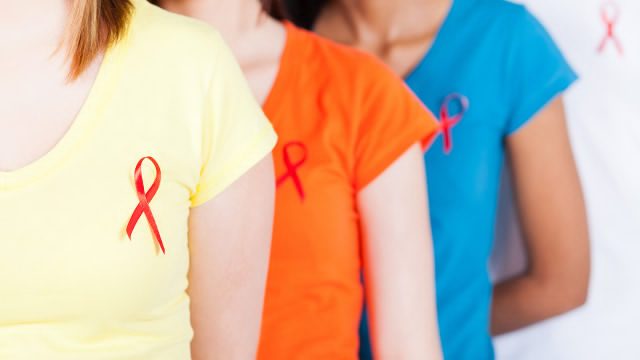SUMMARY
This is AI generated summarization, which may have errors. For context, always refer to the full article.

MANILA, Philippines – The spotlight is on the human immunodeficiency virus (HIV) and acquired immunodeficiency syndrome (AIDS) on Tuesday, December 1 as different groups around the world commemorate World AIDS Day. But instead of a celebration, the data cause concern.
While interest has declined on the issue, the rates of new HIV/AIDS infections have not. At the end of 2014, UNAIDS found that 36.9 million people were living with HIV, some 1.2 million had died, and 2 million additional people were infected.
Out of this total, 5 million people living with HIV were from Asia and the Pacific.
The situation in the Philippines is even more sobering. In April 2015, the Department of Health (DOH) identified 6 cities where HIV prevalence was above the United Nations’ threshold of 5%: Quezon City, Manila, Caloocan, Cebu, Davao, and Cagayan de Oro.
By surpassing 5%, HIV in those areas are considered “uncontrollable” by the World Health Organization’s (WHO) standards.
On November 27, the DOH said there is one case of HIV detected every hour. By then, there were also more cities that exceeded the 5% mark: Cebu, Cagayan de Oro, Puerto Princesa, Mandaue, Davao, Quezon City, Parañaque, and Makati. (READ: DOH: HIV cases in PH may reach 133,000 by 2022)
Significant progress
Despite the glaring numbers, should there cause for celebration? For United Nations Development Program’s (UNDP) Administrator Helen Clark, there is.
Clark cited falling infection rates since 2000 and the decline in AIDS-related deaths since 2004. The success has been partly due to the anti-retroviral therapy (ARV) provided to some 15.8 million people.
Now, Clark said, access to more preventive measures is no longer just a dream. Tests on pre-exposure prophylaxis (PrEP) have shown its effectiveness in reducing HIV infections.
The challenge now is to take the successes further.
“On this World AIDS Day, the world stands at a critical juncture. With the end of AIDS within our reach, we have a window of opportunity before us. We must accelerate the pace on the last mile of the AIDS response,” Clark said.
Although the Millennium Development Goals’ (MDG) targets for HIV/AIDS were not met, the Sustainable Development Goals (SDG) provide a source of hope and opportunity to make progress.
The SDGs identifies three key targets regarding HIV:
- 90% of all people living with HIV (PLHIV) will know their status
- 90% of all PLHIV will receive antiretroviral treatment
- 90% of all receiving antiretroviral treatment will have stable viral suppression
As those most vulnerable to infection are the marginalized, Clark urged nations to “tackle discrimination and remove punitive laws to enable universal access to health and social services.” Addressing the problem of inequality, therefore, should be at the forefront of HIV/AIDS solutions.
World AIDS Day 2015, therefore, is not just a celebration of past successes, but a call to reach new heights in ending HIV/AIDS, Clark said. – Rappler.com
HIV/AIDS is a problem in many communities – both rural and urban – across the Philippines. Responding to our communities’ concern about the issue, Rappler’s MovePH is launching a campaign to promote awareness on the issue. Follow our stories through the hashtags #StayNegatHIVe and #LivePositive.
Add a comment
How does this make you feel?
There are no comments yet. Add your comment to start the conversation.